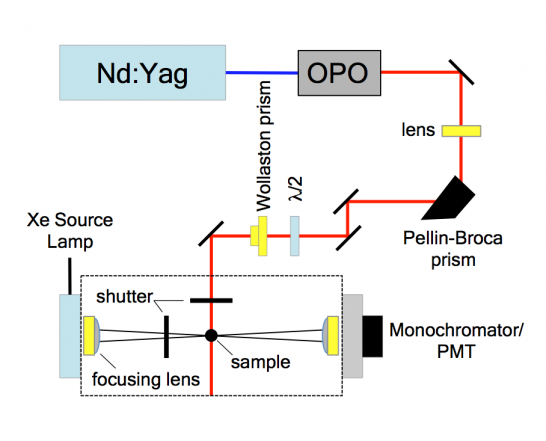Nanosecond Transient Absorption
If something is transient, it only lasts for a short period of time. Transient absorption spectroscopy is a pump-probe technique used to record kinetic and spectral information about short-lived states. We introduce a high intensity laser pulse, known as the pump. It generates a short-lived state in the sample that either can be an ion, radical or excited state. The perturbation in the sample causes a change in the absorption kinetics over a short period of time. These changes are probed with a pulsed xenon source lamp.
 Figure 1. Representation of the nanosecond transient absorption experimental setup.
Figure 1. Representation of the nanosecond transient absorption experimental setup.
The pump utilizes a pulsed Nd: YAG laser (Quanta-Ray INDI-40-10) with a repetition rate of 10 Hz. Its 355 nm light can be used as a direct pump or an OPO generates wavelengths ranging from 410-710 nm. The setup contains a focusing lens, a Pellin-Broca prism and a train of mirrors to direct the beam into a λ/2 plate / Wollaston prism combination which serves as a variable attenuator. The probe is a pulsed 450 W Xenon lamp to obtain a high flux of photons for sensitivity at the nano to microsecond timescale. For measuring transients over longer timescales, a halogen lamp is utilized with much less intensity. High-speed shutters are used to time the pump and probe beams. Transients are observed at a single wavelength and a digital storage oscilloscope records the information. We are able to measure the lifetime of a state from 200 – 1200 nm.